Bitget: входит в топ-4 по глобальному ежедневному объему торговли!
Доля рынка BTC58.93%
Плата за газ ETH сейчас: 0.1-1 gwei
Радужный график биткоина: Накапливайте
BTC/USDT$111499.63 (-1.39%)Индекс страха и жадности51(Нейтральное)
Индекс сезона альткоинов:0(Сезон биткоина)
Общий чистый приток средств в спотовые биткоин-ETF +$202.4M (1 д.); +$798M (7 д.).Приветственные подарки для новых пользователей стоимостью 6200 USDT.Получить
Торгуйте в любое время и в любом месте с помощью приложения Bitget.Скачать сейчас
Bitget: входит в топ-4 по глобальному ежедневному объему торговли!
Доля рынка BTC58.93%
Плата за газ ETH сейчас: 0.1-1 gwei
Радужный график биткоина: Накапливайте
BTC/USDT$111499.63 (-1.39%)Индекс страха и жадности51(Нейтральное)
Индекс сезона альткоинов:0(Сезон биткоина)
Общий чистый приток средств в спотовые биткоин-ETF +$202.4M (1 д.); +$798M (7 д.).Приветственные подарки для новых пользователей стоимостью 6200 USDT.Получить
Торгуйте в любое время и в любом месте с помощью приложения Bitget.Скачать сейчас
Bitget: входит в топ-4 по глобальному ежедневному объему торговли!
Доля рынка BTC58.93%
Плата за газ ETH сейчас: 0.1-1 gwei
Радужный график биткоина: Накапливайте
BTC/USDT$111499.63 (-1.39%)Индекс страха и жадности51(Нейтральное)
Индекс сезона альткоинов:0(Сезон биткоина)
Общий чистый приток средств в спотовые биткоин-ETF +$202.4M (1 д.); +$798M (7 д.).Приветственные подарки для новых пользователей стоимостью 6200 USDT.Получить
Торгуйте в любое время и в любом месте с помощью приложения Bitget.Скачать сейчас


Прогноз цены EIP-712 (X712) – 2023, 2024, 2025
Не включен в листинг
Сколько может стоить EIP-712 в 2025, 2026, 2030 г. и далее? Какова прогнозируемая цена на EIP-712 на завтра, на эту неделю или на этот месяц? И какой возврат инвестиций вы можете получить, удерживая EIP-712 до 2050 г.?
На этой странице предлагаются как краткосрочные, так и долгосрочные инструменты прогнозирования цен на EIP-712, которые помогут вам оценить будущие показатели цены на EIP-712. Вы также можете установить свои собственные прогнозы для оценки будущей цены на EIP-712.
Важно отметить, что, учитывая присущую рынку криптовалют волатильность и сложность, к этим прогнозам, хотя они и дают представление о возможных ценовых диапазонах и сценариях, следует относиться с осторожностью и долей скептицизма.
На этой странице предлагаются как краткосрочные, так и долгосрочные инструменты прогнозирования цен на EIP-712, которые помогут вам оценить будущие показатели цены на EIP-712. Вы также можете установить свои собственные прогнозы для оценки будущей цены на EIP-712.
Важно отметить, что, учитывая присущую рынку криптовалют волатильность и сложность, к этим прогнозам, хотя они и дают представление о возможных ценовых диапазонах и сценариях, следует относиться с осторожностью и долей скептицизма.
График прогноза цен на EIP-712 в 2025 и далее
Прогноз цены на EIP-712 в течение следующих 10 дней на основе прогнозируемого ежедневного темпа роста +0.014%.
Цена сегодня (Oct 29, 2025)
$0.001859
Цена завтра (Oct 30, 2025)
$0.001859
Цена через 5 дней (Nov 3, 2025)
$0.001860
Цена в этом месяце (Oct 2025)
$0.001862
Цена в следующем месяце (Nov 2025)
$0.001870
Цена через 5 месяцев (Mar 2026)
$0.001901
Цена в 2025
$0.001905
Цена в 2026
$0.002000
Цена в 2030
$0.002431
На основе краткосрочных ежедневных прогнозов цен на EIP-712, цена на EIP-712, по прогнозам, составит $0.001859 на Oct 29, 2025, $0.001859 на Oct 30, 2025, и $0.001860 на Nov 3, 2025. Для ежемесячных прогнозов цен на EIP-712, цена на EIP-712, по прогнозам, составит $0.001862 на Oct 2025, $0.001870 на Nov 2025, и $0.001901 на Mar 2026. Для долгосрочных ежегодных прогнозов цен на EIP-712, цена на EIP-712, по прогнозам, составит $0.001905 в 2025, $0.002000 в 2026, и $0.002431 в 2030.
Прогноз цены на EIP-712 на сегодня
Текущая цена на EIP-712 (X712) составляет $0.001858, а изменение цены за 24 часа составляет 0.00%. Ожидается, что цена на EIP-712 (X712) достигнет $0.001859 сегодня. Узнайте больше: Цена на EIP-712 сегодня.
Прогноз цены на EIP-712 в Oct 2025
Ожидается, что цена на EIP-712 (X712) изменится на Infinity% в Oct 2025, и ожидается, что цена на EIP-712 (X712) достигнет $0.001862 к концу Oct 2025.
Прогноз цены на EIP-712 в 2025
Ожидается, что цена на EIP-712 (X712) изменится на Infinity% в 2025, и цена на EIP-712 (X712) достигнет $0.001905 к концу 2025.
Долгосрочный прогноз цен на EIP-712: 2026, 2030, 2035, 2040, 2050
Ниже приведена модель прогнозирования цен на EIP-712, основанная на фиксированном темпе роста. Она игнорирует влияние рыночных колебаний, внешних экономических факторов или чрезвычайных ситуаций и вместо этого фокусируется на средней тенденции цен на EIP-712. Она помогает инвесторам анализировать и быстро рассчитывать потенциальную прибыль от инвестиций в EIP-712.
Введите прогнозируемый годовой темп роста для цен на EIP-712, и посмотрите, как изменится цена на EIP-712 в будущем.
Введите прогнозируемый годовой темп роста для цен на EIP-712, и посмотрите, как изменится цена на EIP-712 в будущем.
Ежегодный прогноз цен на EIP-712 исходя из прогнозируемого годового роста 5%
%
Прогнозируемый годовой рост. Введите процент от -100% до +1000%.
| Год | Прогнозируемая цена | Общий ROI |
|---|---|---|
2026 | $0.002000 | +5.00% |
2027 | $0.002100 | +10.25% |
2028 | $0.002205 | +15.76% |
2029 | $0.002315 | +21.55% |
2030 | $0.002431 | +27.63% |
2035 | $0.003102 | +62.89% |
2040 | $0.003959 | +107.89% |
2050 | $0.006450 | +238.64% |
На основе годового темпа роста 5% ожидается, что цена на EIP-712 (X712) достигнет $0.002000 в 2026, $0.002431 в 2030 г., $0.003959 в 2040 г. и $0.006450 в 2050 г.
Прогноз цены на EIP-712 в 2026
В 2026, исходя из прогнозируемого годового темпа роста 5%, ожидается, что цена на EIP-712 (X712) достигнет $0.002000. На основе этого прогноза совокупный доход от инвестиций от того, что вы удерживаете EIP-712 до конца 2026 может составить 5.00%.
Прогноз цены на EIP-712 в 2030
В 2030, исходя из прогнозируемого годового темпа роста 5%, ожидается, что цена на EIP-712 (X712) достигнет $0.002431. На основе этого прогноза совокупный доход от инвестиций от того, что вы удерживаете EIP-712 до конца 2030 может составить 27.63%.
Прогноз цены на EIP-712 в 2035
В 2035, исходя из прогнозируемого годового темпа роста 5%, ожидается, что цена на EIP-712 (X712) достигнет $0.003102. На основе этого прогноза совокупный доход от инвестиций от того, что вы удерживаете EIP-712 до конца 2035 может составить 62.89%.
Прогноз цены на EIP-712 в 2040
В 2040, исходя из прогнозируемого годового темпа роста 5%, ожидается, что цена на EIP-712 (X712) достигнет $0.003959. На основе этого прогноза совокупный доход от инвестиций от того, что вы удерживаете EIP-712 до конца 2040 может составить 107.89%.
Прогноз цены на EIP-712 в 2050
В 2050, исходя из прогнозируемого годового темпа роста 5%, ожидается, что цена на EIP-712 (X712) достигнет $0.006450. На основе этого прогноза совокупный доход от инвестиций от того, что вы удерживаете EIP-712 до конца 2050 может составить 238.64%.
Сколько прибыли принесет вам EIP-712?
Если вы инвестируете $100 в EIP-712 в этом году и будете удерживать актив до 2026, прогноз цен предполагает потенциальную прибыль в размере $5, отражая ROI 5.00%. Эта оценка не учитывает комиссии.
Отказ от ответственности: это не является инвестиционным советом. Предоставленная информация носит исключительно общий информационный характер. Любая информация, материалы, услуги и другой контент, представленные на этой странице, не являются предложением, рекомендацией, одобрением или каким-либо финансовым, инвестиционным или иным советом. Перед принятием какого-либо инвестиционного решения рекомендуется получить независимую профессиональную консультацию по юридическим, финансовым и налоговым вопросам.
Таблица краткосрочных прогнозов цен на EIP-712
Ежедневный прогноз цены EIP-712, основанный на прогнозируемом ежедневном росте 0.014%
Каков прогноз цены EIP-712 на завтра, 5 дней, 10 дней и далее?%
Прогнозируемый ежедневный рост. Введите процент от –100% до +1000%.
| Дата | Прогнозируемая цена | Общий ROI |
|---|---|---|
Oct 30, 2025 (Завтра) | $0.001859 | +0.01% |
Oct 31, 2025 | $0.001859 | +0.03% |
Nov 1, 2025 | $0.001860 | +0.04% |
Nov 2, 2025 | $0.001860 | +0.06% |
Nov 3, 2025 (Через 5 дн.) | $0.001860 | +0.07% |
Nov 4, 2025 | $0.001860 | +0.08% |
Nov 5, 2025 | $0.001861 | +0.10% |
Nov 6, 2025 | $0.001861 | +0.11% |
Nov 7, 2025 | $0.001861 | +0.13% |
Nov 8, 2025 (Через 10 дн.) | $0.001862 | +0.14% |
На основе ежедневного темпа роста 0.014%, цена EIP-712 (X712) достигнет $0.001859 Oct 30, 2025, $0.001860 через Nov 3, 2025 и $0.001862 через Nov 8, 2025.
Прогноз цены на EIP-712 в Oct 30, 2025
На основе ежедневного темпа роста 0.014% для EIP-712 предполагаемая стоимость 1 EIP-712 будет $0.001859 Oct 30, 2025 (Завтра). Ожидаемый ROI от инвестирования и хранения EIP-712 до конца Oct 30, 2025 — 0.01%.
Прогноз цены на EIP-712 в Nov 3, 2025
На основе ежедневного темпа роста 0.014% для EIP-712 предполагаемая стоимость 1 EIP-712 будет $0.001860 Nov 3, 2025 (Через 5 дн.). Ожидаемый ROI от инвестирования и хранения EIP-712 до конца Nov 3, 2025 — 0.07%.
Прогноз цены на EIP-712 в Nov 8, 2025
На основе ежедневного темпа роста 0.014% для EIP-712 предполагаемая стоимость 1 EIP-712 будет $0.001862 Nov 8, 2025 (Через 10 дн.). Ожидаемый ROI от инвестирования и хранения EIP-712 до конца Nov 8, 2025 — 0.14%.
Ежемесячный прогноз цены EIP-712, основанный на прогнозируемом ежемесячном росте 0.42%
Каков прогноз цены EIP-712 на следующий месяц, через 5 месяцев, 10 месяцев и далее?%
Прогнозируемый ежемесячный рост. Введите процент от –100% до +1000%.
| Дата | Прогнозируемая цена | Общий ROI |
|---|---|---|
Nov 2025 (следующий месяц) | $0.001870 | +0.42% |
Dec 2025 | $0.001878 | +0.84% |
Jan 2026 | $0.001885 | +1.27% |
Feb 2026 | $0.001893 | +1.69% |
Mar 2026 (через 5 месяцев) | $0.001901 | +2.12% |
Apr 2026 | $0.001909 | +2.55% |
May 2026 | $0.001917 | +2.98% |
Jun 2026 | $0.001925 | +3.41% |
Jul 2026 | $0.001933 | +3.84% |
Aug 2026 (через 10 месяцев) | $0.001942 | +4.28% |
Согласно ежемесячному темпу роста 0.42%, цена EIP-712 (X712) достигнет $0.001870 в Nov 2025, $0.001901 в Mar 2026 и $0.001942 в Aug 2026.
Прогноз цены на EIP-712 в Nov 2025
Согласно ежемесячному темпу роста 0.42%, прогнозируемая цена EIP-712 (X712) Nov 2025 (через следующий месяц) — $0.001870. Ожидаемый ROI от инвестирования и хранения EIP-712 до конца Nov 2025 — 0.42%.
Прогноз цены на EIP-712 в Mar 2026
Согласно ежемесячному темпу роста 0.42%, прогнозируемая цена EIP-712 (X712) Mar 2026 (через через 5 месяцев) — $0.001901. Ожидаемый ROI от инвестирования и хранения EIP-712 до конца Mar 2026 — 2.12%.
Прогноз цены на EIP-712 в Aug 2026
Согласно ежемесячному темпу роста 0.42%, прогнозируемая цена EIP-712 (X712) Aug 2026 (через через 10 месяцев) — $0.001942. Ожидаемый ROI от инвестирования и хранения EIP-712 до конца Aug 2026 — 4.28%.
Популярные статьи о прогнозе цен на криптовалюту
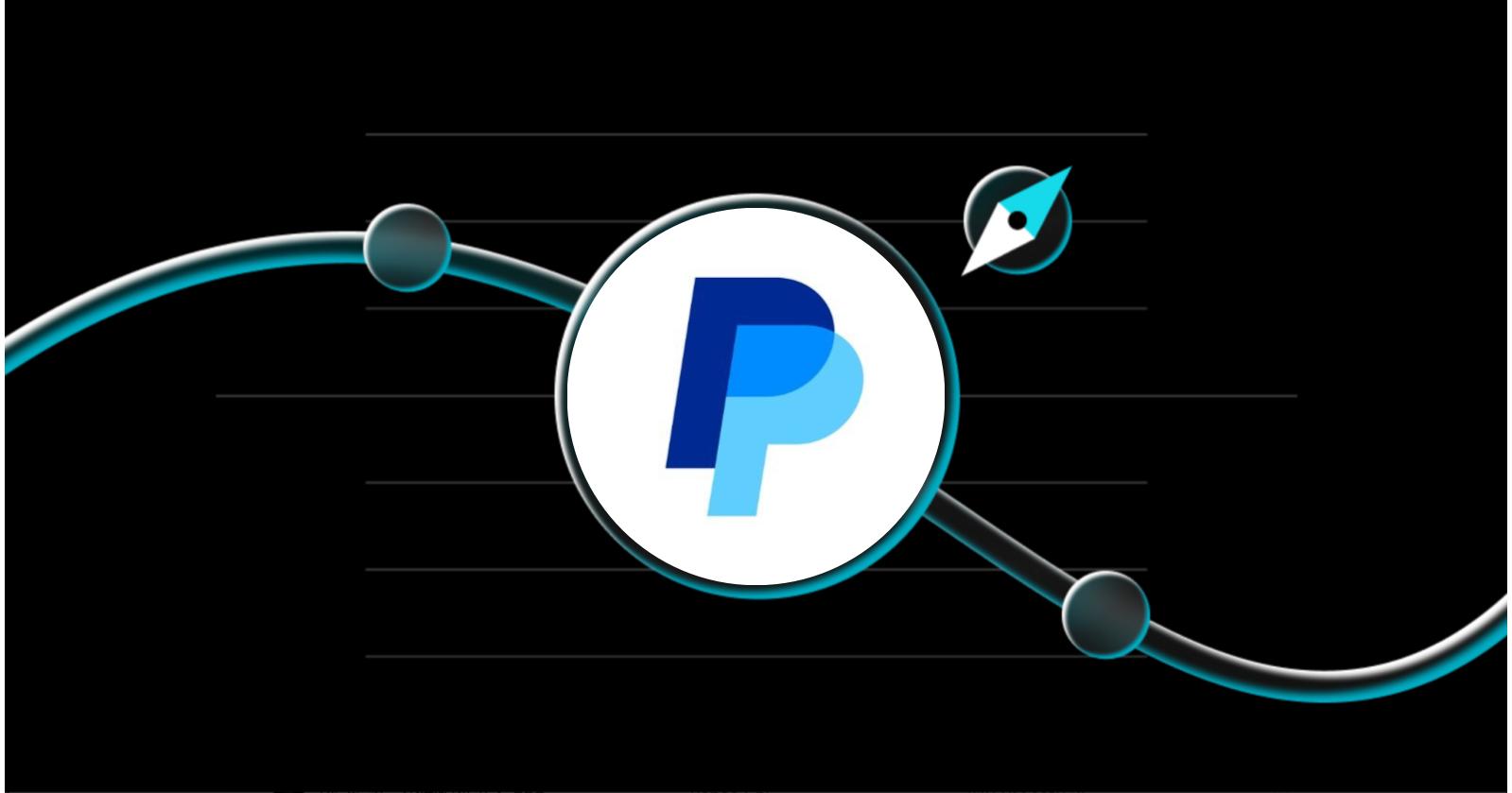
PayPal Stock Rises on ChatGPT Deal — But Can It Last?
PayPal stock is making headlines again — this time, for riding the wave of artificial intelligence. In late October 2025, shares of PayPal Holdings Inc. (NASDAQ: PYPL) surged after the company announced a high-profile partnership with OpenAI’s ChatGPT. The deal allows users to check out and complete purchases directly inside the ChatGPT interface using their PayPal accounts, ushering in a new era of AI-driven commerce.
The timing couldn’t have been better. Alongside the AI news, PayPal also delivered a stronger-than-expected Q3 earnings report, reinforcing the sense that the company might be turning a corner after a sluggish year. The stock’s double-digit rally was a breath of fresh air for long-suffering shareholders — but the big question now is: can this momentum last? Is PayPal's AI integration a real growth catalyst, or just a short-lived pop driven by market enthusiasm?
The Deal: PayPal Meets ChatGPT
PayPal’s recent partnership with OpenAI marks a major strategic shift toward AI-powered commerce. Through this collaboration, users of ChatGPT can now shop and complete purchases using their PayPal accounts — all within the chatbot’s interface. Powered by OpenAI’s new Agentic Commerce Protocol (ACP), the integration allows PayPal to offer seamless checkout, order tracking, and buyer protections directly inside AI-driven conversations. It’s a significant step toward what CEO Alex Chriss calls “frictionless, intelligent payments,” enabling users to move from product discovery to purchase in just a few taps.
Beyond convenience, the deal opens the door for millions of PayPal’s merchant partners to reach ChatGPT’s massive global audience. As conversational AI becomes more embedded in the customer journey, PayPal is positioning itself as the default payment layer for this emerging channel — not just in ChatGPT, but also across other AI platforms like Google Bard and Perplexity. It’s a bold bet on the rise of “agentic commerce,” and one that could redefine how users engage with digital wallets in the coming years.
PayPal Stock Pops — But What’s Behind the Rally?
PayPal Holdings, Inc. (PYPL) Price
Source: Yahoo Finance
PayPal stock surged following its high-profile integration with ChatGPT, jumping as much as 15% in pre-market trading on October 28, 2025. The stock peaked above $81 — a level it hadn’t seen since early in the year — before settling up around 8% by market close. This marked one of PayPal’s best single-day performances in months. The rally was fueled by a potent combination: investor excitement over the company’s AI ambitions and stronger-than-expected third-quarter earnings released the same day.
Still, the market’s reaction wasn’t purely euphoric. Analysts largely viewed the AI partnership as a smart move, positioning PayPal within an emerging commerce trend. But they also flagged some caveats. For one, PayPal isn’t likely to be the sole payment provider in ChatGPT — competition will remain fierce. Moreover, the actual impact on revenue and transaction volume is still speculative. While the market applauded PayPal’s willingness to innovate, many investors are waiting to see whether this early momentum can convert into sustainable growth.
The Fundamentals: Earnings, Engagement, and Execution
Behind the headlines about AI, PayPal’s recent quarterly report revealed steady progress in its core business. In Q3 2025, the company posted revenue of $8.4 billion, up 7% year-over-year and ahead of Wall Street estimates. Adjusted earnings came in at $1.34 per share, beating consensus forecasts of around $1.20. These numbers marked the company’s strongest quarter this year and provided much-needed reassurance to investors after a prolonged period of underperformance.
One of the standout metrics was Venmo’s resurgence. The peer-to-peer payments platform saw 14% year-over-year growth in payment volume and is now expected to generate roughly $1.7 billion in revenue this year — a meaningful contribution that PayPal hasn’t spotlighted in the past. The company also reported steady expansion in Buy Now, Pay Later (BNPL) usage and improving transaction margins, thanks to a strategic focus on higher-quality payment volumes. Under new CEO Alex Chriss, PayPal is shifting from aggressive user growth toward operational efficiency. The company initiated its first-ever dividend this quarter and authorized significant share buybacks, signaling a stronger commitment to shareholder returns. With raised full-year EPS guidance now in the $5.35–$5.39 range, PayPal appears to be building a more profitable, focused foundation for future growth.
PayPal Stock Price Prediction: Where Could It Go Next?
After its recent rally into the low $80s, PayPal stock has regained attention — but its future trajectory remains uncertain. Analyst targets vary widely, from $68 to $105, with most forecasts landing in the $80–$90 range. Here’s a breakdown of the three major outlooks:
Bullish case ($95–$105): PayPal gains meaningful transaction volume through its AI integrations, Venmo accelerates as a revenue driver, consumer spending rebounds, and the company exceeds earnings expectations while expanding margins.
Base case ($80–$90): The ChatGPT integration shows moderate traction, core metrics grow steadily, and PayPal meets its 2025 guidance while maintaining buybacks and operational focus.
Bearish case ($68–$75): AI commerce adoption is slower than hoped, competition limits PayPal’s role within ChatGPT, margins tighten due to reinvestment, and macroeconomic weakness drags on consumer spending and branded checkout volumes.
With sentiment cautiously optimistic, the next few quarters — especially holiday performance and AI rollout updates — will likely determine whether PayPal stock can push higher or slide back into old patterns.
Conclusion
PayPal’s partnership with ChatGPT has reignited investor interest, offering a compelling narrative that ties the company to the future of AI-driven commerce. Combined with solid Q3 earnings and a renewed focus on profitability, the move signals a shift from defense to offense — and gives shareholders a reason to hope for sustained growth.
Still, the path forward isn’t without hurdles. The success of PayPal’s AI ambitions will hinge on consumer adoption, merchant engagement, and the company’s ability to execute in a competitive payments landscape. With macroeconomic pressures still in play, investors should stay optimistic — but also watch closely to see if this momentum translates into long-term results.
Disclaimer: The opinions expressed in this article are for informational purposes only. This article does not constitute an endorsement of any of the products and services discussed or investment, financial, or trading advice. Qualified professionals should be consulted prior to making financial decisions.
Академия Bitget2025-10-29 16:30
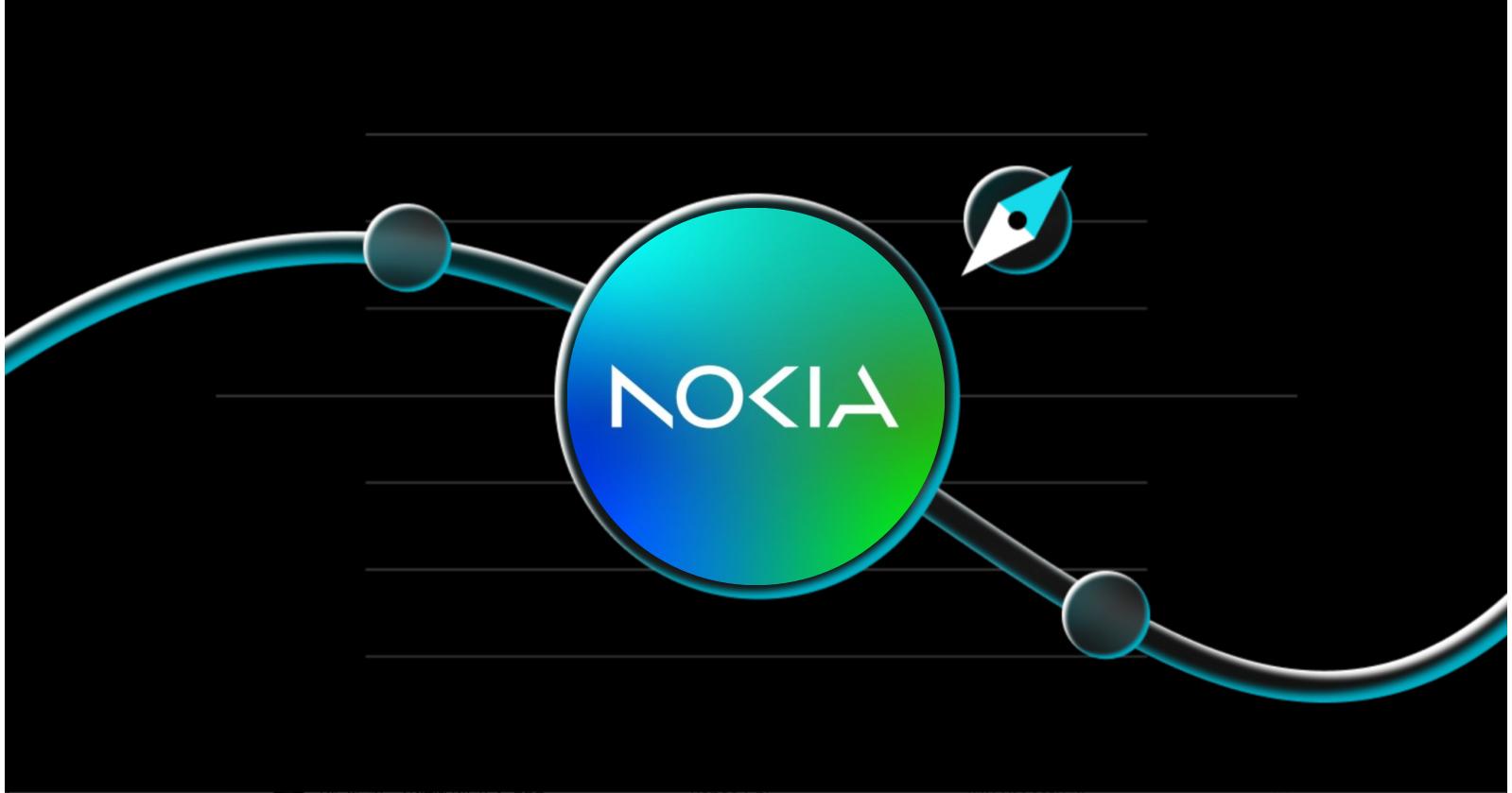
Nokia Stock Hits 10-Year High — Turns Out, AI Is the New Ringing Tone
A decade ago, Nokia was known for phones. Its ringtone was iconic, its hardware was everywhere, and for a while, it dominated the global mobile market. But after losing ground in the smartphone era and exiting the handset business, Nokia faded from the spotlight. Investors largely filed it under "legacy tech" — a steady but unexciting player in telecom equipment. That changed in October 2025.
Nokia’s stock has just surged to a 10-year high, jumping more than 20% in a single day after Nvidia announced a $1 billion investment for a 2.9% stake in the company. It wasn’t just a financial boost — it was a strategic signal. Nvidia’s backing has reframed how the market sees Nokia: no longer just a supplier of 5G base stations, but a potential enabler of the AI-driven networks and data centers of the future. As telecom, cloud, and AI infrastructure converge, Nokia seems to be in the right place — at the right time — with the right partner. In 2025, AI is the new ringing tone.
The Rise of Nokia: From Iconic Ringtones to AI Ambitions
Nokia’s reinvention didn’t happen overnight. After selling its handset business to Microsoft in 2014, the company turned its full attention to building telecommunications infrastructure — a sector far less glamorous, but essential. For most of the last decade, Nokia competed with the likes of Ericsson and Huawei, providing 4G and 5G networking gear to carriers around the world. It was a solid business, but not one that generated much buzz on Wall Street.
That started to change in recent years. Nokia began expanding its focus beyond traditional telecom customers, moving into high-performance optical networking, edge computing, and data center interconnects. These technologies are critical to the AI boom — powering the data flow behind machine learning workloads and generative AI applications. The company’s 2023–2025 strategic plan emphasized AI-ready infrastructure, and under CEO Pekka Lundmark, and more recently Justin Hotard, Nokia pushed deeper into the cloud and enterprise space. By the third quarter of 2025, revenue from hyperscale and AI customers had grown significantly — a clear signal that Nokia was becoming more than a telecom vendor. It was evolving into a full-stack enabler of AI-powered connectivity.
The Catalyst: Nvidia’s $1 Billion AI Endorsement
The market rarely shrugs when Nvidia makes a move — and its $1 billion investment in Nokia was no exception. On October 28, 2025, Nvidia announced it would acquire a 2.9% stake in Nokia by purchasing approximately 166 million newly issued shares at $6.01 each. This makes Nvidia one of Nokia’s largest shareholders and, more importantly, a strategic partner in co-developing AI-powered network infrastructure.
The investment isn’t just symbolic. Alongside the capital infusion, the two companies revealed plans to jointly build AI-native networking solutions, blending Nvidia’s GPU-driven computing platforms with Nokia’s expertise in cloud, fiber, and wireless infrastructure. The goal? To make global networks smarter, faster, and better optimized for the massive data demands of artificial intelligence. They also plan to work with T-Mobile US on developing and trialing next-generation 6G radio technologies starting as early as 2026.
For Nokia, this deal is more than a funding boost — it’s a strategic validation. Nvidia’s entry puts a spotlight on Nokia’s AI-readiness and fast-tracks its transition into a key player in the next wave of AI-enabled connectivity. And for investors, the Nvidia name alone was enough to reprice Nokia stock overnight — signaling a much broader transformation in progress.
How AI Became Central to Nokia’s Growth Model
Why is artificial intelligence such a big deal for Nokia’s business right now? Because the world’s explosive demand for AI computing power has created a surge in need for ultra-fast, scalable network infrastructure — exactly the kind of technology Nokia builds. As AI workloads grow more complex and widespread, telecom and cloud providers are rethinking how data moves across their systems. Nokia has positioned itself at the center of that transformation, evolving from a traditional telecom equipment supplier to an AI-era infrastructure partner. As one market analysis put it: “Nokia has been pivoting into AI data centers — and Nvidia evidently likes the strategic shift.”
That pivot is already showing up in Nokia’s numbers. In Q3 2025, the company posted an 11.6% year-over-year increase in revenue, driven largely by growing demand for AI-optimized networking products. Sales in its Optical Networks division — which provides fiber links crucial for AI data centers — rose 19%, while Cloud and Network Services grew 13%, reflecting increased investment from telecom operators upgrading to AI-capable core networks. These are strong growth signals for a company that, until recently, was seen as a slow-moving legacy player.
Guiding this transformation is CEO Justin Hotard, who stepped in with deep roots in data centers and AI from his tenure at Intel. Under his leadership, Nokia is integrating Nvidia’s AI software and hardware into its systems, pushing intelligence to the network edge — closer to where data is generated. This strategic shift isn’t just about efficiency; it’s about relevance. Nokia wants to be embedded in the next wave of global connectivity — where networks don’t just carry data, but analyze and act on it in real time. For Nokia, AI isn’t just an add-on. It’s the new engine powering the company’s future.
Market Rally and Investor Sentiment
Nokia Oyj (NOK) Price
Source: Yahoo Finance
Nokia’s transformation hasn’t gone unnoticed by the markets. Even before the Nvidia deal, its stock had been gaining momentum throughout the second half of 2025 as investors warmed to its AI infrastructure strategy. But after the $1 billion announcement, momentum turned into a breakout. In just one day, Nokia’s U.S.-listed shares surged over 20%, pushing the stock to its highest price in a decade. By late October, the stock was up approximately 70% year-to-date, outperforming many large-cap tech peers and re-establishing Nokia as a company worth watching.
The rally has also changed how Nokia is valued. Traditionally seen as a conservative telecom hardware provider, Nokia traded at a discount to peers like Cisco and Ericsson. That’s shifting. After the Nvidia-driven spike, Nokia now trades at about 17× forward earnings — a multiple more typical of AI-adjacent or cloud-infrastructure stocks. In comparison, Ericsson trades around 13×, and Cisco, which also leans into AI infrastructure, sits closer to 17.5×. This re-rating shows that investors now see Nokia as a growth-oriented player, not just a stable legacy brand.
Importantly, analysts don’t believe the stock has overheated — at least not yet. Nokia’s market cap of $45 billion, strong net cash position (~€3 billion), and consistent profitability offer a solid foundation. The stock also carries a modest dividend yield of ~1.9%, and a price-to-book ratio of around 1.3, suggesting the rally is still grounded in fundamentals. That said, expectations are now higher. With the Nvidia vote of confidence and a major strategy shift in motion, investors are watching closely to see if Nokia can execute — and prove this new chapter has staying power.
Nokia Stock Price Prediction and Future Outlook
With its stock at a 10-year high and fresh momentum from Nvidia’s $1 billion endorsement, Nokia’s future is being re-evaluated by analysts — and the outlook is cautiously optimistic. Some forecasts suggest Nokia’s U.S.-listed shares (NYSE: NOK), which recently hit the $8 mark, could reach $10.20 to $10.50 within the next 12 months. That would represent roughly 27% upside from current levels. Analysts point to the company’s growing relevance in AI infrastructure, its healthy balance sheet, and its ability to monetize the Nvidia partnership over time as key drivers behind this bullish sentiment.
Much of that optimism hinges on execution. Nokia is still in transition, and its bold pivot toward AI and advanced networking will take time to fully deliver results. The company’s leadership expects new AI-centric product lines — including those co-developed with Nvidia — to begin generating significant revenue by 2027. If successful, these solutions could unlock long-term contracts with cloud providers, telecom operators, and even governments, tapping into what could be a multi-billion-dollar market for AI-native infrastructure.
That said, there are risks. Telecom operator spending remains under pressure globally, and 6G is still several years away from commercial rollout. If the AI infrastructure wave slows or competition from rivals like Ericsson or Huawei intensifies, Nokia’s growth could face headwinds. Still, most analysts agree that the company is better positioned than it has been in years. With strong cash reserves, rising investor confidence, and a clear strategic direction, Nokia has the potential not just to defend its recent gains — but to build on them.
Conclusion
Nokia’s climb to a 10-year stock high is more than a short-term rally — it marks a turning point in how the market sees the company. With a $1 billion vote of confidence from Nvidia and a growing presence in AI infrastructure, Nokia is no longer just a legacy telecom vendor. It’s repositioning itself at the intersection of cloud, connectivity, and artificial intelligence — and investors are responding to that shift. The strong performance in its optical and cloud segments, combined with a clear strategic vision, suggests this momentum isn’t just hype — it’s built on meaningful change.
That said, the road ahead will require execution. Nokia must turn partnerships into products, and strategy into sustained revenue. But for the first time in years, it has both the market’s attention and a credible path toward long-term growth. The familiar ringtone of its past may be gone — but the sound of servers, data, and AI processing just might be Nokia’s new rhythm. And if it stays in tune, this could be one of tech’s most unexpected second acts.
Disclaimer: The opinions expressed in this article are for informational purposes only. This article does not constitute an endorsement of any of the products and services discussed or investment, financial, or trading advice. Qualified professionals should be consulted prior to making financial decisions.
Академия Bitget2025-10-29 12:49
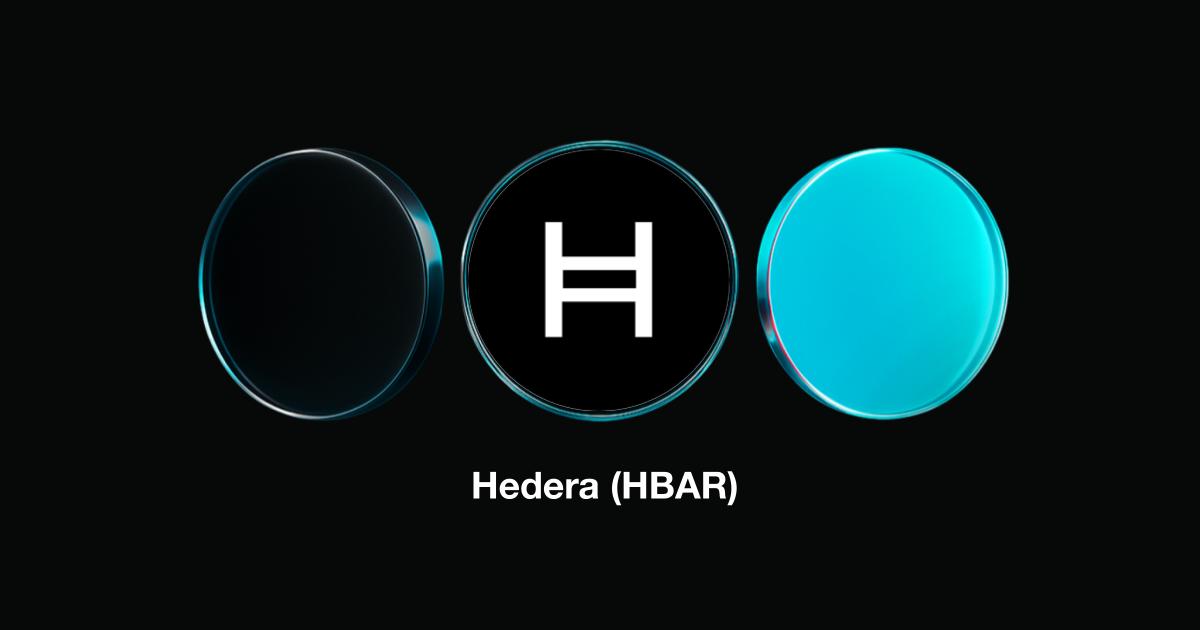
The Complete Guide to HBAR Crypto & the HBAR ETF Debut: Insights, Backers, and Market Impact
Hedera Hashgraph (HBAR) has been gaining momentum as both a cutting-edge crypto asset and the foundation of a robust decentralized ecosystem. The recent launch of the first HBAR ETF on Nasdaq has brought a new level of legitimacy and accessibility to institutional investors, echoing the waves made by previous altcoin ETF releases. In this article, we break down what makes Hedera and HBAR unique, who is backing the project, what the ETF debut means for the market, how other altcoins like DOGE and XRP performed around ETF news, and where HBAR might be headed next—all informed by data, history, and the core principles outlined in the Hedera white paper.
Source: CoinMarketCap
What is Hedera (HBAR) Crypto?
Hedera Hashgraph is a next-generation public distributed ledger that stands out for its speed, security, and fairness. Unlike blockchains, Hedera uses a unique consensus mechanism called Hashgraph, detailed in its white paper. This technology does not rely on heavy computational work—instead, it allows transactions to be gossiped throughout the network, efficiently achieving consensus with low bandwidth requirements. Any member can create and sign transactions, and the network reaches a fair and robust order of those transactions even under attack, ensuring resilience and trust.
HBAR, the native token of Hedera, acts as the utility coin for transaction fees, network protection (through proof-of-stake), and on-chain governance. The system is designed to withstand Byzantine failures, as its protocol ensures that, even in highly asynchronous environments, consensus will eventually be reached, supporting the kind of fault tolerance strictly defined by computer science hedera whitepaper.pdf.
Who is Backing Hedera? (The Team and Council)
Hedera scores high on credibility due to its renowned founding team and governance model. Dr. Leemon Baird and Mance Harmon, who bring deep expertise in cybersecurity and decentralized computing, created Hedera’s core architecture. On top of that, Hedera employs a unique council-based governance model, with up to 39 world-leading organizations—such as Google, IBM, Boeing, Deutsche Telekom, and LG Electronics—overseeing the platform. This Council ensures that governance is decentralized, transparent, and resistant to any single entity's control.
HBAR ETF Debut: A New Era for Institutional Adoption
A true game-changer for HBAR arrived with the debut of the Canary HBAR ETF on Nasdaq. This is the first ETF to offer direct exposure to Hedera’s token, making it available to a wider range of investors—especially institutions who demand security and compliance. The fund is custodied by trusted firms like BitGo and Coinbase Custody, ensuring transparency and robust asset protection.
This ETF launch marks a new era for Hedera. Shortly after its launch, HBAR experienced a sharp 16% single-day rally, bouncing back from an October correction and regaining investor confidence. Its market capitalization now sits around $8.2 billion, a promising signal in a market that has recently slipped into fear territory. For many investors, this kind of launch is more than just an event—it’s an opportunity to accumulate assets with strong fundamentals at attractive prices.
Hedera’s growth doesn’t stop there. The Foundation also announced USDC’s addition to Bybit, injecting fresh liquidity into the ecosystem and reinforcing HBAR’s position in the DeFi and stablecoin market. Network upgrades have boosted speed, scalability, and efficiency, while ongoing integrations with DeFi and NFT projects are steadily driving adoption.
HBAR and Altcoins: How Have DOGE and XRP Responded to ETF-Related News?
The arrival of an ETF often acts as rocket fuel for a token’s price. Let's look at some concrete figures for prominent altcoins:
DOGE
Dogecoin has a well-known penchant for sharp surges when a listing or ETF discussion hits the headlines. For instance:
In May 2021, when DOGE was listed on Coinbase, the price soared from around $0.32 to $0.44 over two days—a jump of nearly 37%.During 2023, as rumors swirled about a potential meme coin ETF, DOGE surged about 25% over a single week, highlighting just how sensitive the asset is to news flow.
XRP
XRP has also seen significant price reactions around institutional product launches or resolution of legal challenges:
On July 13, 2023, after Ripple secured a partial legal victory in U.S. courts, XRP’s price exploded from $0.47 to $0.93—an astonishing 98% increase in less than 24 hours.When institutional-grade trading products have been launched or announced (such as new ETFs or ETPs in Europe and Asia), XRP has experienced daily gains in the 20–40% range.These dramatic responses reflect not only the power of big announcements but also the underlying market structure described in distributed ledger white papers: when trustworthy information rapidly reaches all participants (gossip about gossip!), prices respond in. In volatile crypto markets, such moments can represent inflection points for both sentiment and valuation.
USDC Expansion and Network Upgrades Fuel HBAR’s Growth
Stablecoin activity is exploding within the HBAR ecosystem. As of October 2025, USDC issuance on Hedera reached $172.1 million, with weekly growth accelerating by over 93% and monthly gains more than doubling. This influx of liquidity enhances HBAR’s role in decentralized finance, payments, and tokenized asset solutions.
Ongoing network upgrades also improve HBAR’s speed and scalability, while recent integrations with DeFi and NFT applications demonstrate growing adoption. These technical and ecosystem advances position HBAR as a leading choice for investors seeking utility and growth in the crypto space.
HBAR Price Prediction — Where Next?
From both a technical and fundamental perspective, HBAR is showing signs of robust recovery and future potential:
After a sharp drop to $0.17 following a large liquidation event, HBAR quickly rebounded, climbing back above $0.19, and holding support strongly around $0.18.The token’s recent RSI (relative strength index) is around 54, indicating that there’s still room for growth before becoming overbought.Chart watchers note an inverse head-and-shoulders pattern forming on the hourly chart (neckline at $0.169–$0.170). A breakout above this could propel HBAR toward the $0.181–$0.183 resistance region, where prior selling was strong.
USDC’s rapid adoption on Hedera further strengthens the case: as of October 23, 2025, over $172.1 million worth of USDC is issued on the network, with weekly and monthly growth surging by 93% and 105%, respectively. This increases liquidity for DeFi, payments, and tokenized assets—all vital for a healthy digital asset ecosystem.
Conclusion
The launch of the HBAR ETF marks a significant step towards broader adoption and accessibility of HBAR, particularly among institutional investors. Backed by strong governance from major global organizations and continuous network upgrades, Hedera and its native token HBAR have experienced notable growth in both liquidity and utility. As seen in the performance of other altcoins following ETF-related events, the introduction of an HBAR ETF has the potential to influence price movements and trading activity. However, as with any investment in the cryptocurrency sector, market dynamics can be volatile and unpredictable. It is important for investors to conduct careful research, monitor new developments, and evaluate risk before making investment decisions regarding HBAR or the HBAR ETF.
Disclaimer: The opinions expressed in this article are for informational purposes only. This article does not constitute an endorsement of any of the products and services discussed or investment, financial, or trading guidance. Qualified professionals should be consulted prior to making financial decisions.
Академия Bitget2025-10-29 11:27
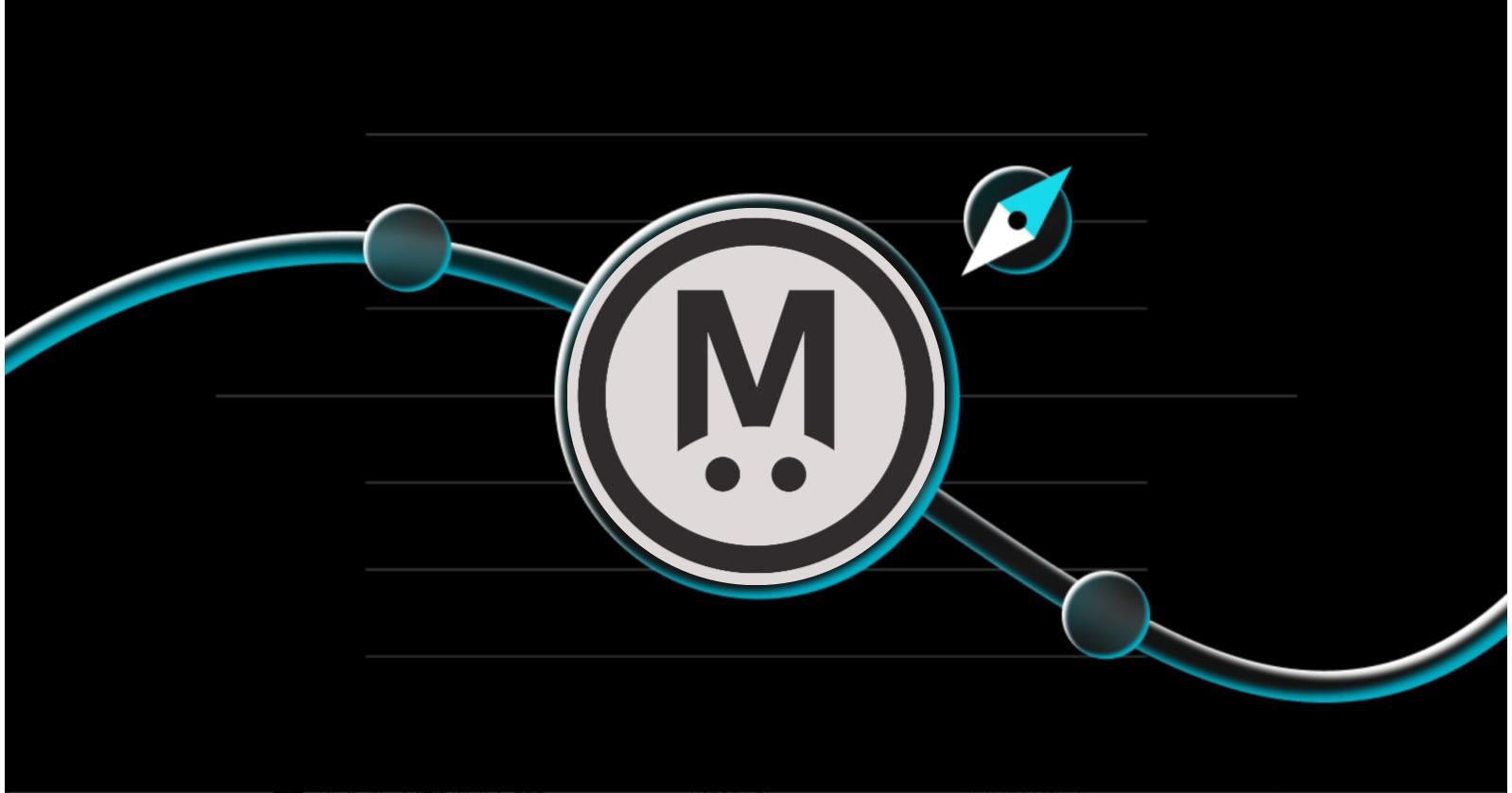
What Is MegaETH? MEGA Public Sale, Airdrop, Tokenomics, and What Might Happen to the Price Post-Launch
Ethereum’s scalability debate has been brewing for years, with Layer-2 networks stepping in to bridge the gap between performance and decentralization. Now, MegaETH is entering the arena with a bold promise: real-time blockchain execution, web-speed user experience, and the capacity to support the next generation of on-chain applications. With claims of processing over 100,000 transactions per second and block finality in under a blink, MegaETH is making a big statement in an already competitive L2 landscape.
Fueling the buzz is the recent MEGA token public sale, which raised nearly $50 million in minutes and pushed MegaETH into the crypto spotlight. But there’s more to the story than a sell-out auction. In this article, we’ll break down what MegaETH is, how it works, the MEGA token’s economics, details around the airdrop, and what might happen to the token price once it hits the open market.
What Is MegaETH?
MegaETH is a high-performance Layer-2 blockchain built on top of Ethereum, engineered for speed, scalability, and real-time responsiveness. Unlike traditional rollups that settle transactions in batches every few seconds or minutes, MegaETH is designed to offer millisecond-level block times and support over 100,000 transactions per second (TPS). Its mission is to bring Web2-level responsiveness to decentralized applications (dApps), making interactions on-chain feel instant and seamless.
The project was founded by Shuyao Kong, a former head of strategy at Mask Network, alongside a team of engineers and researchers from top tech and crypto firms including Apple, Google, Meta, and Paradigm. Their combined experience spans zero-knowledge cryptography, distributed systems, and large-scale consumer platforms — giving MegaETH both deep technical credibility and operational chops. Even Ethereum co-founder Vitalik Buterin is reportedly a backer of the project, signaling strong support from the Ethereum community.
At its core, MegaETH maintains compatibility with the Ethereum Virtual Machine (EVM), meaning developers can deploy existing Ethereum-based smart contracts without major rewrites. It settles transactions back to Ethereum for finality and security, while offloading execution to its own high-speed infrastructure. By pushing the boundaries of how fast a blockchain can operate, MegaETH aims to become the foundation for a new class of applications—from high-frequency trading platforms to real-time gaming and AI-powered smart agents.
How MegaETH Works
MegaETH’s standout feature is its ability to operate in real-time, but how it gets there involves a combination of architectural innovations. Instead of relying solely on Ethereum’s mainnet for data throughput, MegaETH builds its own optimized execution layer—trading some traditional rollup mechanics for raw speed.
● Blazing-Fast Block Times: MegaETH targets block production every 10–20 milliseconds, compared to the ~2 seconds of Optimism or Arbitrum. This enables a true real-time experience, especially for apps that need instant feedback—like trading dashboards, on-chain games, or autonomous agents.
● Parallel Transaction Execution: Unlike many EVM-compatible chains that process transactions sequentially, MegaETH uses multi-threaded execution. This means it can run many smart contract operations at once across CPU cores, significantly boosting throughput to over 100,000 TPS under test conditions.
● Off-Chain Data Availability Layer: To avoid congestion on Ethereum, MegaETH handles data availability via an external layer rather than posting all calldata directly on Ethereum. While this design improves speed and scalability, it has sparked debate: some critics argue that it makes MegaETH more of a “Layer 1 in disguise” than a true Ethereum rollup.
● Ethereum-Anchored Finality: Despite outsourcing execution and data availability, MegaETH still settles key state updates on Ethereum, preserving the base layer’s security guarantees. It functions as an optimistic rollup in this regard, though with its own specialized DA and sequencing stack.
● EVM Compatibility & Lower Fees: Developers can use existing Solidity contracts and Ethereum tooling with almost no changes. For users, fees are expected to be a fraction of Ethereum mainnet costs, thanks to the network’s execution efficiency and batching mechanisms.
MegaETH’s approach is bold—it sacrifices some decentralization purity for the sake of speed and responsiveness. But for builders who need real-time performance, the trade-off may be worth it. Whether the architecture can scale securely under real-world usage remains one of the key questions as it moves toward mainnet.
What Is MegaETH (MEGA) Tokenomics
MegaETH (MEGA) Token Allocation
The MEGA token is the native token of the MegaETH network, serving as the core utility and incentive mechanism across its ecosystem. It is used to pay for gas fees, secure the network through staking, and will eventually empower holders to participate in protocol governance. As MegaETH aims to support real-time dApps, MEGA will function as the economic fuel driving these interactions. Total supply is capped at 10 billion MEGA tokens, giving the project a fixed-token model that avoids inflationary drift over time.
In addition to its utility, MEGA plays a central role in network incentives. Validators and active users can earn rewards by staking and contributing to the protocol’s performance, with incentives tied to network KPIs. This performance-driven reward model encourages long-term engagement and aligns the interests of participants with the network’s growth. With its mix of functional use and incentive alignment, MEGA is designed to power both the economic layer and the security model of MegaETH as the network scales.
The MegaETH Public Sale: Key Details About the MEGA Token Launch
MegaETH’s public token sale was one of the most anticipated events in the crypto space this year—and it delivered. The sale officially opened on October 27, 2025, using an English auction format hosted on the Sonar platform by Echo. Although it was scheduled to run for 72 hours, demand was so intense that it reached its maximum price within minutes and fully sold out. The auction successfully raised nearly $50 million in minutes, pricing the token at the top end of its range and marking a major milestone for the project.
Here are the key details:
● Token Allocation: 500 million MEGA tokens (5% of total supply) were available in the sale.
● Auction Type: English auction, with participants placing competing bids until the cap was reached.
● Price Range: Floor at $0.0001 per token (FDV of $1M) and ceiling at $0.0999 (FDV of $999M).
● Final Sale Price: Hit the ceiling—$0.0999 per MEGA.
● Total Raised: Approximately $49.95 million.
● Participation Limits: Minimum bid of $2,650 and a maximum of $186,282 per user.
● Bonus Incentive: Participants could opt into a 12-month lockup in exchange for a 10% token bonus. This was required for U.S. users and optional for others.
● Accepted Currency: USDT on Ethereum mainnet.
The outcome of the auction reflected the overwhelming investor interest and set an early benchmark valuation just under $1 billion. With MEGA futures trading well above the sale price even before token generation, many are now watching closely to see how the token performs once it hits exchanges.
The MegaETH Airdrop: What You Should Know
While MegaETH hasn’t announced a broad community airdrop (yet), there is one group that’s guaranteed to receive MEGA tokens: holders of The Fluffle, a soulbound NFT collection of 10,000 early supporters. Each Fluffle NFT entitles its holder to a share of 5% of the total MEGA token supply, making it the only confirmed allocation outside of the public and private sales. These NFTs were distributed earlier in the year to backers who participated in an early funding round, and they’ve since become a symbol of insider access to the MegaETH ecosystem.
As for everyone else, things are less clear. The team has not confirmed any retroactive airdrops for testnet users, early Discord participants, or Sonar registrants. That said, there’s strong speculation that additional community-based rewards could emerge in the future—especially given MegaETH’s heavy emphasis on long-term engagement and performance-based incentives. For now, if you’re not holding a Fluffle NFT, there’s no guaranteed airdrop to claim—but staying active in the ecosystem and watching official channels could still pay off down the line.
MEGA Token Price Prediction: What Could Happen After Launch?
The MEGA token hasn’t even launched on major exchanges yet, but speculation is already running hot. During the public sale, MEGA was priced at $0.0999, implying a fully diluted valuation (FDV) of just under $1 billion. However, pre-market futures on platforms like Hyperliquid have traded MEGA at up to $0.44, pointing to a possible FDV of $4.4 billion—more than 4× its auction price. That kind of spread suggests that early buyers are sitting on significant potential gains, at least on paper.
Whether MEGA holds or exceeds that valuation post-launch depends on a few key factors:
● Exchange Listings: A top-tier listing (e.g. Binance, Coinbase) could ignite a price surge by unlocking retail liquidity and visibility.
● Mainnet Launch & Ecosystem Growth: If MegaETH delivers on its real-time performance promises and quickly attracts users and developers, demand for MEGA (as gas and staking collateral) could spike.
● Staking and Lockups: If a significant portion of MEGA is locked up for rewards or held long-term, circulating supply may stay limited—supporting price stability or upside.
● Profit-Taking Risk: Early participants may cash out if MEGA launches at multiples of the auction price, which could cause short-term volatility.
In the short term, MEGA is likely to experience high volatility as the market finds its footing. Longer term, the token’s value will track the actual adoption of the MegaETH network and whether it can live up to its high-speed, low-latency claims.
Conclusion
MegaETH is entering the Layer-2 arena with bold ambitions and serious momentum. With its focus on real-time execution, ultra-low latency, and scalability that pushes past 100,000 transactions per second, it’s positioning itself not just as another rollup—but as a performance-first infrastructure layer for the future of Web3. The overwhelming response to the MEGA token sale, paired with speculation around airdrops and exchange listings, shows that the market is paying close attention.
But as with any hyped launch, the real test begins after the token goes live. Investors will be watching to see how quickly MegaETH’s ecosystem grows, whether the mainnet can deliver on its speed claims, and how the token’s economics hold up under real-world conditions. MEGA has captured attention—now it needs to earn staying power.
Disclaimer: The opinions expressed in this article are for informational purposes only. This article does not constitute an endorsement of any of the products and services discussed or investment, financial, or trading advice. Qualified professionals should be consulted prior to making financial decisions.
Академия Bitget2025-10-28 17:40
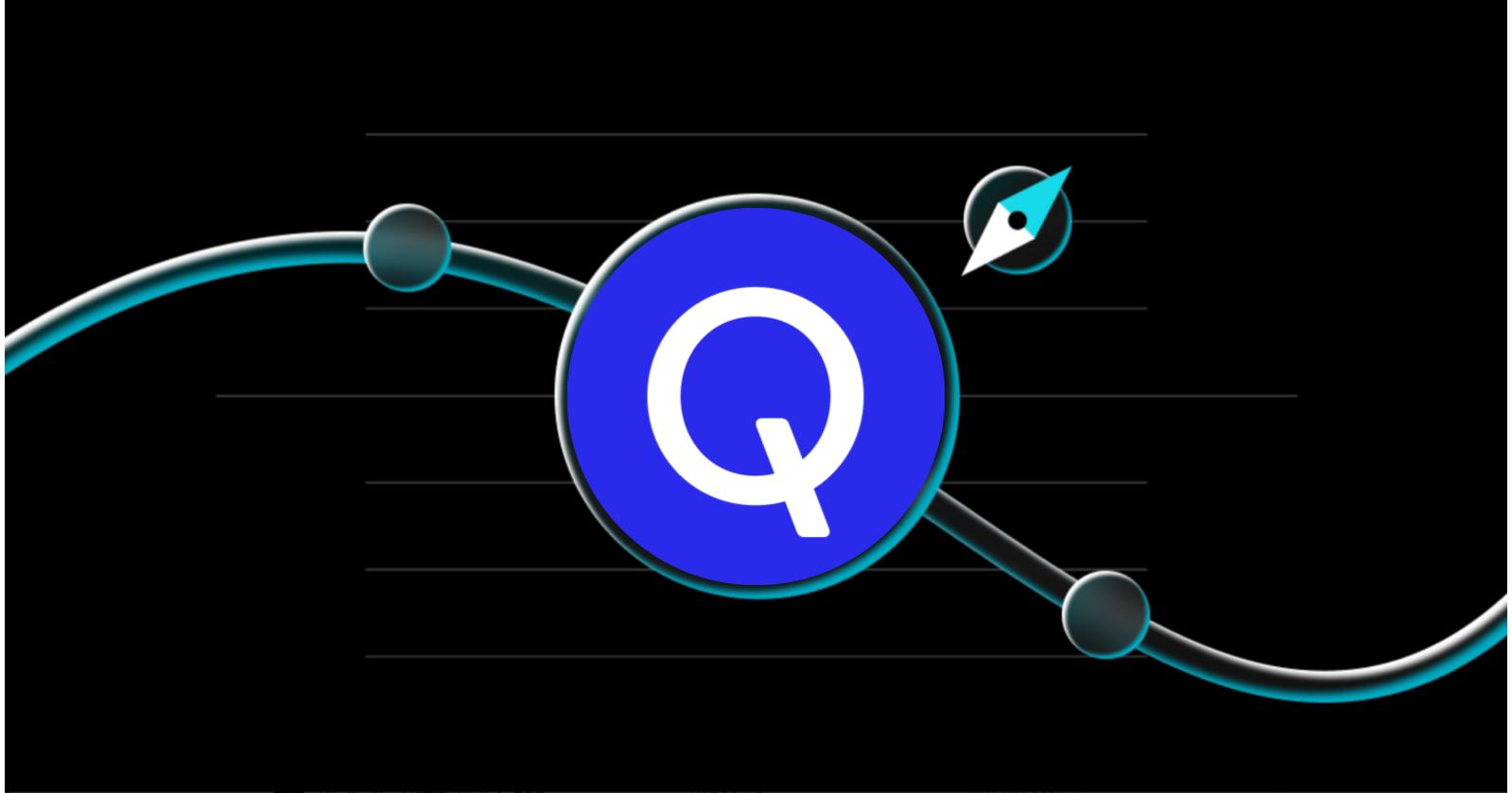
Qualcomm Stock Price Surges as AI Data Center Ambitions Impress Wall Street
Qualcomm has made a bold entrance into the AI spotlight — and Wall Street is taking notice. The chipmaker’s stock surged by over 20% intraday following its announcement of new AI data center hardware, including two purpose-built chips designed to handle large-scale inference tasks. This dramatic rally, which sent Qualcomm (NASDAQ: QCOM) to its highest share price in more than a year, reflects investor enthusiasm for the company’s pivot toward high-performance AI infrastructure — a market long dominated by rivals like Nvidia and AMD.
At the heart of the announcement are Qualcomm’s new AI200 and AI250 accelerators, along with a full suite of server hardware designed to run them. Rather than simply licensing mobile chip technology or providing edge AI solutions, Qualcomm is now aiming squarely at the data center — offering end-to-end AI systems that promise strong performance with superior energy efficiency. The market responded quickly and enthusiastically, signaling a potential revaluation of Qualcomm not just as a mobile chip company, but as a serious contender in the growing AI infrastructure race.
What Is Qualcomm Incorporated (QCOM)?
Qualcomm Incorporated is a leading American semiconductor company headquartered in San Diego, California. Best known for its mobile chipsets and wireless communication technologies, Qualcomm plays a foundational role in the global smartphone ecosystem. Its Snapdragon processors and cellular modems power many of the world’s top smartphones, while its licensing business earns revenue from intellectual property tied to 3G, 4G, and 5G technologies. For years, Qualcomm has enjoyed strong margins and a dominant position in the mobile market, particularly through its relationships with Android phone makers and Apple.
But Qualcomm is no longer just a mobile chipmaker. Under the leadership of CEO Cristiano Amon, the company has broadened its focus to include automotive, IoT (Internet of Things), PC, and AI sectors — all areas with long-term growth potential. Qualcomm’s strategy revolves around leveraging its core strengths in power-efficient chip design and connectivity to tap into new, adjacent markets. Its investments in edge computing, on-device AI, and now data center hardware reflect an effort to diversify revenue and stay competitive in an increasingly AI-driven semiconductor landscape. With this latest move into full-scale AI data center systems, Qualcomm is signaling that it’s ready to compete beyond mobile and stake its claim in the future of computing infrastructure.
Qualcomm Goes All-In on AI — and the Market Loves It
On October 27, 2025, Qualcomm made headlines with a bold declaration: it’s stepping fully into the AI data center race. The company unveiled two new AI accelerator chips — the AI200 and the AI250 — built specifically to handle large-scale AI inference workloads. But Qualcomm didn’t stop at chips. It also introduced full-stack solutions, including PCIe accelerator cards and entire liquid-cooled server racks, signaling that it’s not just supplying components — it’s aiming to deliver the full infrastructure package.
This move marks a significant shift for a company long associated with smartphone technology. Qualcomm is leveraging its deep experience in power-efficient mobile chips to offer AI systems that claim to deliver high performance with lower energy demands. Each rack reportedly supports up to 768 GB of low-power memory per card, a figure that puts it ahead of competitors like Nvidia and AMD in certain technical aspects. The systems are slated to begin shipping in 2026, with a more advanced AI250 version to follow in 2027.
Investor excitement surged with the announcement. Qualcomm revealed that its first major customer, Humain — an AI startup based in Saudi Arabia — plans to deploy 200 megawatts worth of Qualcomm-powered AI infrastructure. That real-world traction, combined with the ambitious product launch, sent QCOM shares soaring. The stock spiked over 20% intraday, signaling strong confidence from the market that Qualcomm’s AI bet could reshape its growth trajectory.
Why Wall Street Is Suddenly Bullish on Qualcomm
Qualcomm’s announcement didn’t just introduce new AI chips — it introduced a new storyline for the company, one that investors have been waiting to hear. For much of the past year, QCOM stock lagged behind peers as it remained heavily tied to the maturing smartphone market. But with its sudden and ambitious entry into AI infrastructure, Qualcomm is presenting a fresh case to Wall Street: that it's no longer just a mobile chipmaker, but an emerging player in one of tech’s fastest-growing sectors.
The AI data center space is booming, and companies with credible offerings are commanding strong valuations. By unveiling high-performance, energy-efficient AI accelerators and locking in a significant first customer, Qualcomm sent a strong signal that it's ready to compete — and potentially capture market share from entrenched rivals like Nvidia and AMD. Investors were quick to reward that vision. The 20% intraday surge in Qualcomm’s stock reflects not only excitement about the AI200 and AI250 chips, but also optimism that the company can reshape its revenue profile and earn a higher valuation multiple as a legitimate AI contender.
Qualcomm Stock Price Prediction: Where Could It Go Next?
Qualcomm Stock Price
Source: Yahoo Finance
After Qualcomm’s sharp rally, investors are now weighing the sustainability of its momentum — and whether this AI-driven shift has more room to run. As of late October 2025, analysts remain cautiously optimistic. The consensus rating on QCOM is a “Moderate Buy”, with most price targets ranging from $175 to $225. That wide range reflects both the potential upside of Qualcomm’s AI strategy and the execution risks that come with entering a fiercely competitive new market.
At the top end, some analysts see the stock pushing past $220 over the next 12 months — particularly if the AI200 and AI250 gain traction with cloud providers and enterprise customers beyond the initial Humain deal. These bullish forecasts assume Qualcomm can capture a meaningful slice of the AI inference market, expand its customer base, and prove its systems deliver on performance and energy efficiency. That would not only boost revenue, but likely drive a re-rating of Qualcomm’s valuation in line with more AI-centric peers.
On the flip side, some price targets hover in the low-$170s, reflecting more conservative expectations. Skeptics point to Qualcomm’s late arrival in the data center space and the steep challenge of unseating incumbents like Nvidia, which enjoy strong developer ecosystems, long-standing customer relationships, and a first-mover advantage. There’s also the question of how much capital Qualcomm will need to invest in building out this business — and whether near-term returns will justify those costs.
Ultimately, the path forward will depend on execution. If Qualcomm can back its bold entrance with strong adoption, reliable hardware, and additional enterprise wins, QCOM stock could continue its upward trend. But if hype fades before meaningful traction is achieved, the stock may settle back toward pre-announcement levels. For now, the market is giving Qualcomm the benefit of the doubt — but the next 12–18 months will be critical in determining whether this AI pivot is a game-changer or just a promising start.
Conclusion
Qualcomm’s sudden surge in stock price isn’t just about flashy AI headlines — it’s about a company rewriting its story at a pivotal moment. By entering the AI data center market with purpose-built chips and full-stack hardware solutions, Qualcomm is signaling its ambition to become more than a smartphone chipmaker. Investors have responded enthusiastically, sending a clear message that the market is eager to reward companies making serious plays in the AI space.
Of course, bold ambitions come with big expectations. Qualcomm now faces the challenge of delivering results — securing more enterprise partners, proving performance at scale, and gaining share in a market already dominated by giants. But for the first time in years, the narrative surrounding QCOM stock has shifted from “steady and mature” to “strategic and growth-driven.” That change alone could reshape how the market values Qualcomm going forward. If execution follows, this AI bet could mark the beginning of a compelling new chapter for one of the semiconductor industry's most established players.
Disclaimer: The opinions expressed in this article are for informational purposes only. This article does not constitute an endorsement of any of the products and services discussed or investment, financial, or trading advice. Qualified professionals should be consulted prior to making financial decisions.
Академия Bitget2025-10-28 10:52
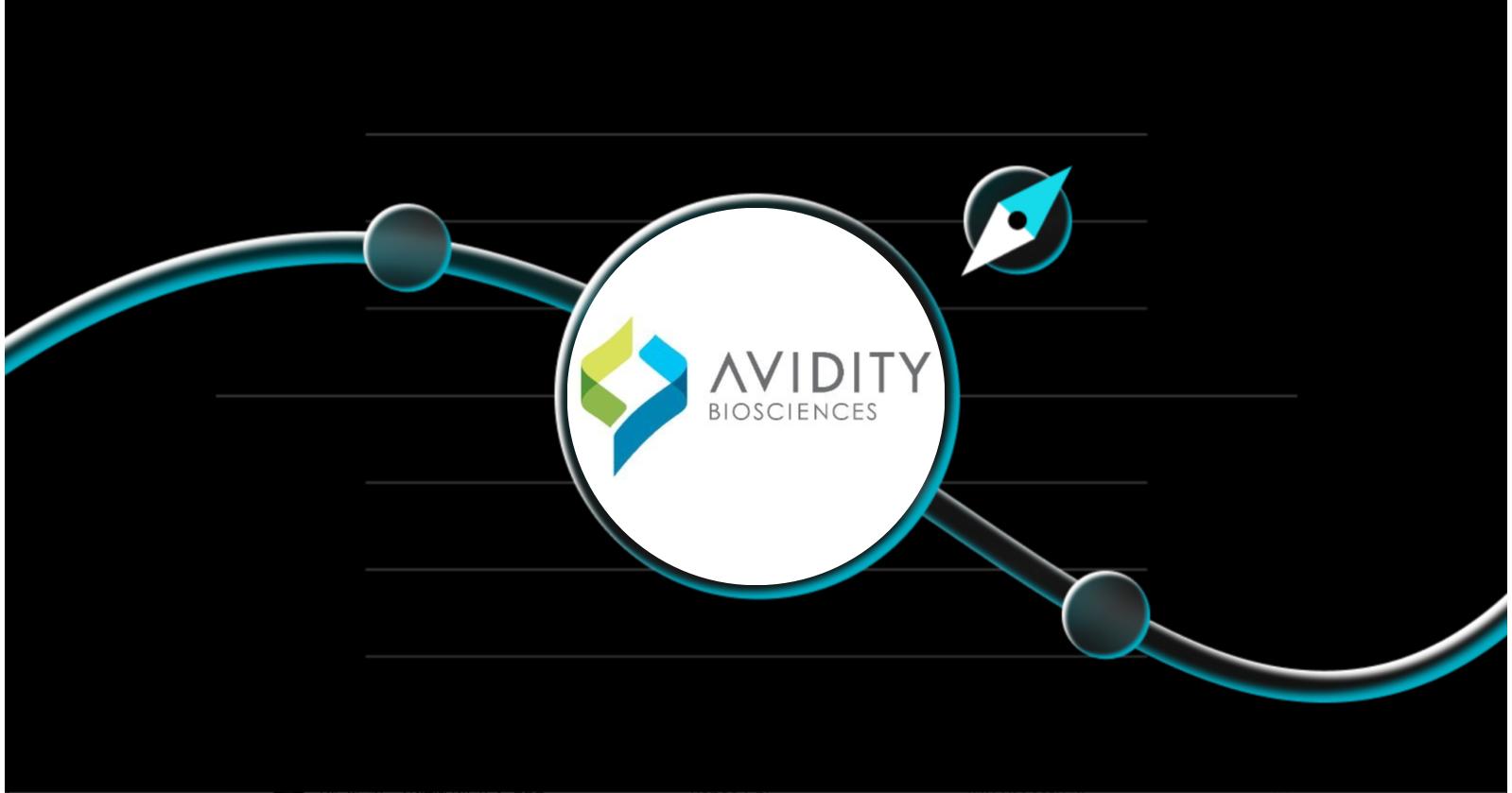
Avidity Stock Price Soars After $12 Billion Novartis Buyout Announcement
Avidity Biosciences, Inc. (NASDAQ: RNA) grabbed headlines this week after Swiss pharmaceutical giant Novartis announced its plans to acquire the RNA-focused biotech firm in a massive $12 billion all-cash deal. The news, revealed on October 26, 2025, sent Avidity’s stock price soaring by over 40%, reflecting investor enthusiasm for the premium offer and growing confidence in RNA-based therapeutics. Under the terms of the agreement, Novartis will pay $72 per share, a significant markup from Avidity’s prior closing price—instantly putting the company in the spotlight of Wall Street and biotech circles alike.
This acquisition not only highlights the increasing strategic importance of next-generation genetic medicines but also underscores the appetite among major pharmaceutical players to secure promising clinical-stage platforms in high-growth therapeutic areas. In this article, we’ll explore what Avidity Biosciences is, break down the details of the buyout, analyze the stock’s reaction and implications, and discuss where the Avidity stock price might go next as the deal unfolds.
What Is Avidity Biosciences, Inc. (RNA)
Avidity Biosciences is a clinical-stage biotechnology company headquartered in San Diego, California. Its mission is to pioneer a new class of RNA-based medicines that can precisely target and treat serious rare diseases, particularly in the field of neuromuscular disorders. The company trades under the ticker symbol RNA on the NASDAQ and has garnered significant attention for its proprietary platform known as Antibody Oligonucleotide Conjugates (AOCs).
AOCs are designed to combine the precision of monoclonal antibodies with the therapeutic potential of RNA. This approach allows Avidity to deliver genetic medicine directly into muscle tissue—a significant breakthrough in treating diseases where traditional gene therapy has faced delivery challenges. In essence, Avidity’s technology “guides” RNA molecules to specific cells, helping correct or silence faulty genes that cause diseases.
As of late 2025, Avidity has three lead programs in its pipeline, targeting:
● Duchenne muscular dystrophy (DMD), specifically exon 44 skipping,
● Facioscapulohumeral muscular dystrophy (FSHD), and
● Myotonic dystrophy type 1 (DM1).
Although none of its drugs have reached the market yet, the promise of first-in-class therapies and positive early clinical data have attracted both investor interest and pharma partnerships. Prior to the acquisition announcement, analysts had already begun valuing the company in the $60–$70 per share range, citing the strength of its pipeline and the uniqueness of its delivery platform.
Inside the $12 Billion Novartis–Avidity Deal
On October 26, 2025, Novartis announced it would acquire Avidity Biosciences in a $12 billion all-cash transaction, marking one of the largest biotech acquisitions of the year. The pharmaceutical giant will pay $72.00 per share, representing a roughly 46% premium over Avidity’s last unaffected closing price. This premium underscores both the strategic value Novartis sees in Avidity’s RNA delivery platform and the broader trend of Big Pharma investing aggressively in next-generation genetic medicine.
The acquisition gives Novartis full access to Avidity’s pipeline of investigational therapies, especially its late-stage candidates targeting neuromuscular diseases such as DMD and FSHD. Novartis framed the deal as a way to bolster its neuroscience and rare disease portfolios—both priority areas for the company as it prepares for multiple patent expirations over the next few years.
However, the transaction comes with an important structural detail: Avidity will first spin off its early-stage cardiology and precision medicine programs into a separate entity called “SpinCo.” Funded with $270 million in cash, SpinCo will be a standalone company focused on cardiovascular RNA therapeutics. Leadership will include several current Avidity executives, with Chief Program Officer Kathleen Gallagher named CEO and current CEO Sarah Boyce serving as board chair.
Avidity shareholders will receive one share of SpinCo for every 10 shares of Avidity they hold, in addition to the $72 per share in cash upon deal closure. The spin-off ensures that shareholders retain exposure to the company’s earlier R&D efforts while Novartis absorbs the late-stage neuromuscular programs that sparked its interest. Pending customary regulatory and shareholder approvals, the acquisition is expected to close in the first half of 2026. Both boards have unanimously approved the deal, and analysts view the path to completion as relatively smooth given the complementary nature of the transaction.
Avidity Stock Price Reaction: What Happened and Why
Following the acquisition announcement, Avidity’s stock (RNA) experienced a dramatic surge, rising more than 40% in a single trading session to trade just below the $72 per share buyout price. The jump was expected given the size of the premium Novartis is offering, and it signals strong market confidence that the deal will close as proposed.
The immediate price movement reflects how merger arbitrage investors price in deals: RNA shares moved rapidly to align with the offer price, minus a small discount that accounts for time and deal-completion risk. In this case, the discount was narrow—an indication that investors view regulatory and shareholder approval as low hurdles.
Investor enthusiasm was also bolstered by the clear strategic fit and Novartis’s reputation for executing complex biotech integrations. The $12 billion offer was seen by analysts as not only a validation of Avidity’s scientific platform, but also as a sign of strength in the broader RNA therapeutic space. The premium was higher than many anticipated, especially given that Avidity was still in the clinical stage with no FDA-approved products.
Notably, while Avidity’s stock soared, Novartis’s own shares were relatively flat or slightly down, which is typical for large acquirers in the pharmaceutical sector. Investors often react cautiously to big-ticket deals due to concerns about integration costs and near-term earnings dilution. However, early sentiment suggests the market views this acquisition as a long-term growth move for Novartis, with minimal risk of regulatory pushback.
Avidity Stock Price Prediction: Where Could It Go Next?
Following Novartis’s $12 billion buyout announcement, Avidity Biosciences’ stock (NASDAQ: RNA) is expected to remain firmly anchored near the $72 per share offer price. Since the deal is all cash and carries a sizable premium, the stock will likely trade just below that figure—typically between $69 and $71—as investors price in the time and risk until completion. Unless another bidder emerges or regulators intervene, Avidity’s stock has limited room for further upside, as the buyout effectively caps its valuation.
In the short term, investors can expect RNA shares to move in a tight range until the acquisition closes, which is projected for the first half of 2026. The main variable that could influence price movement now is confidence in deal completion. Any delays, shareholder litigation, or regulatory hurdles could cause temporary dips, while smooth progress toward closing would likely bring the price closer to the $72 payout level.
However, the real wildcard is SpinCo, the new entity that Avidity will spin off before the transaction completes. Each shareholder will receive one SpinCo share for every 10 Avidity shares, retaining exposure to Avidity’s early-stage cardiology programs and $270 million in funding. While RNA stock itself is now essentially a merger-arbitrage play, the value of SpinCo could add bonus upside for investors once it begins trading independently.
Conclusion
Avidity Biosciences’ stunning stock surge after Novartis’s $12 billion buyout announcement is a testament to how groundbreaking science can turn into market-shifting opportunity. The $72-per-share deal not only delivers a substantial 46% premium to investors but also cements Avidity’s place as a trailblazer in RNA-based therapeutics. For Novartis, the acquisition signals a bold commitment to tackling rare neuromuscular diseases and expanding its footprint in the rapidly evolving RNA medicine landscape.
As the transaction heads toward completion in 2026, Avidity’s stock may settle near the offer price, but the story is far from over. With the upcoming SpinCo spinoff and the promise of new RNA-driven breakthroughs, this merger could become a defining case study in how innovation reshapes entire industries. After all, if Avidity’s science delivers on its potential, today’s buyout premium might one day look like a bargain.
Disclaimer: The opinions expressed in this article are for informational purposes only. This article does not constitute an endorsement of any of the products and services discussed or investment, financial, or trading advice. Qualified professionals should be consulted prior to making financial decisions.
Академия Bitget2025-10-27 13:16
Купить X712 на Bitget за 3 простых шага

Зарегистрируйте аккаунт на Bitget
Зарегистрируйтесь на Bitget, указав свой адрес электронной почты/номер мобильного телефона, и придумайте надежный пароль для защиты учетной записи.

Верифицируйте аккаунт
Пройдите верификацию личности, введя персональные данные и загрузив действительное удостоверение личности с фотографией.

Купить X712 (X712)
Чтобы купить X712 на Bitget, используйте различные способы оплаты. Мы покажем вам, как это сделать.
Купить больше криптовалют
Как купить
Bitcoin (BTC)

Как купить
Ethereum (ETH)

Как купить
Ripple (XRP)

Как купить
Tron (TRX)

Как купить
Dogecoin (DOGE)

Как купить
Tezo (XTZ)

Как купить
Bitget Token (BGB)

Как купить
Polygon (POL)

Как купить
Solana (SOL)

Как купить
Terra Classic (LUNC)

Как купить
Fantom (FTM)

Как купить
Bitcoin Cash (BCH)

Как купить
Ethereum Classic (ETC)

Как купить
Litecoin (LTC)

Как купить
Binance (BNB)

Как купить
Avalanche (AVAX)

Как купить
Internet Computer (ICP)

Как купить
Tether (USDT)

Как купить
USDC (USDC)

Как купить
Uniswap (UNI)

Подробнее
Прогноз цен на трендовые монеты
 Прогноз цены Bitcoin
Прогноз цены Bitcoin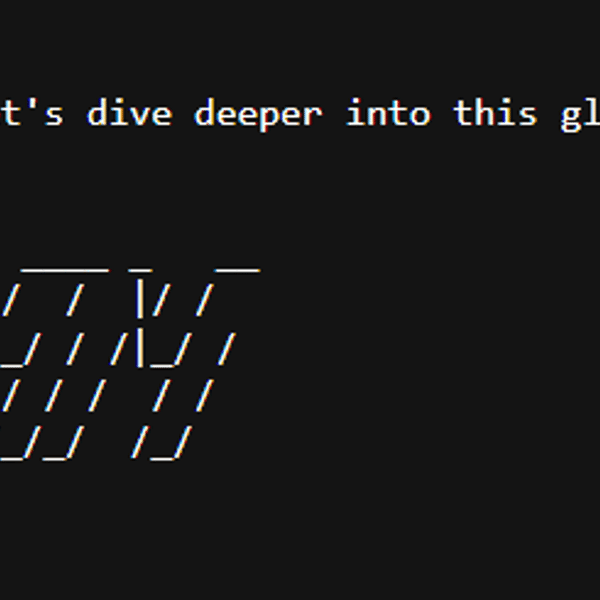 Прогноз цены Fartcoin
Прогноз цены Fartcoin Прогноз цены Pi
Прогноз цены Pi Прогноз цены Toncoin
Прогноз цены Toncoin Прогноз цены Bonk
Прогноз цены Bonk Прогноз цены Cardano
Прогноз цены Cardano Прогноз цены Pepe
Прогноз цены Pepe Прогноз цены Dogecoin
Прогноз цены Dogecoin Прогноз цены Shiba Inu
Прогноз цены Shiba Inu Прогноз цены Terra
Прогноз цены Terra Прогноз цены Smooth Love Potion
Прогноз цены Smooth Love Potion Прогноз цены Kaspa
Прогноз цены Kaspa Прогноз цены dogwifhat
Прогноз цены dogwifhat Прогноз цены Worldcoin
Прогноз цены Worldcoin Прогноз цены Ethereum
Прогноз цены Ethereum Прогноз цены OFFICIAL TRUMP
Прогноз цены OFFICIAL TRUMP Прогноз цены XRP
Прогноз цены XRP Прогноз цены Stellar
Прогноз цены Stellar Прогноз цены Solana
Прогноз цены Solana Прогноз цены WINkLink
Прогноз цены WINkLinkГде можно купить EIP-712 (X712)?
Учитывая присущую рынку криптовалют волатильность и сложность, точно предсказать будущие цены криптовалют практически невозможно. Однако, исходя из циклического характера рынка, исторических ценовых тенденций, долгосрочных перспектив развития и потенциала более широкого внедрения, мы все же можем сделать некоторые общие прогнозы относительно будущих ценовых движений. В то же время следует отметить, что хотя эти прогнозы могут дать представление о потенциальных ценовых диапазонах и сценариях, к ним следует относиться с осторожностью и долей скептицизма. Фактические движения цен вряд ли будут полностью соответствовать этим прогнозам, и их следует рассматривать лишь как приблизительную оценку инвестиционного потенциала рынка.
Этот контент представлен только для информационных целей и не является предложением, призывом к действию или рекомендацией Bitget покупать, продавать или удерживать какие-либо ценные бумаги, финансовые продукты или инструменты, упомянутые на этой странице. Содержание данной страницы также не является инвестиционным, финансовым, торговым или любым другим советом. Представленные данные могут отражать цены активов, котируемых на бирже Bitget, а также на других криптовалютных биржах и платформах рыночных данных. Bitget может взимать комиссию за обработку криптовалютных транзакций, которая может не указываться в отображаемых ценах конвертации. Bitget не несет ответственности за любые ошибки или задержки в отображении контента или за любые действия, предпринятые в результате его использования.
Этот контент представлен только для информационных целей и не является предложением, призывом к действию или рекомендацией Bitget покупать, продавать или удерживать какие-либо ценные бумаги, финансовые продукты или инструменты, упомянутые на этой странице. Содержание данной страницы также не является инвестиционным, финансовым, торговым или любым другим советом. Представленные данные могут отражать цены активов, котируемых на бирже Bitget, а также на других криптовалютных биржах и платформах рыночных данных. Bitget может взимать комиссию за обработку криптовалютных транзакций, которая может не указываться в отображаемых ценах конвертации. Bitget не несет ответственности за любые ошибки или задержки в отображении контента или за любые действия, предпринятые в результате его использования.

